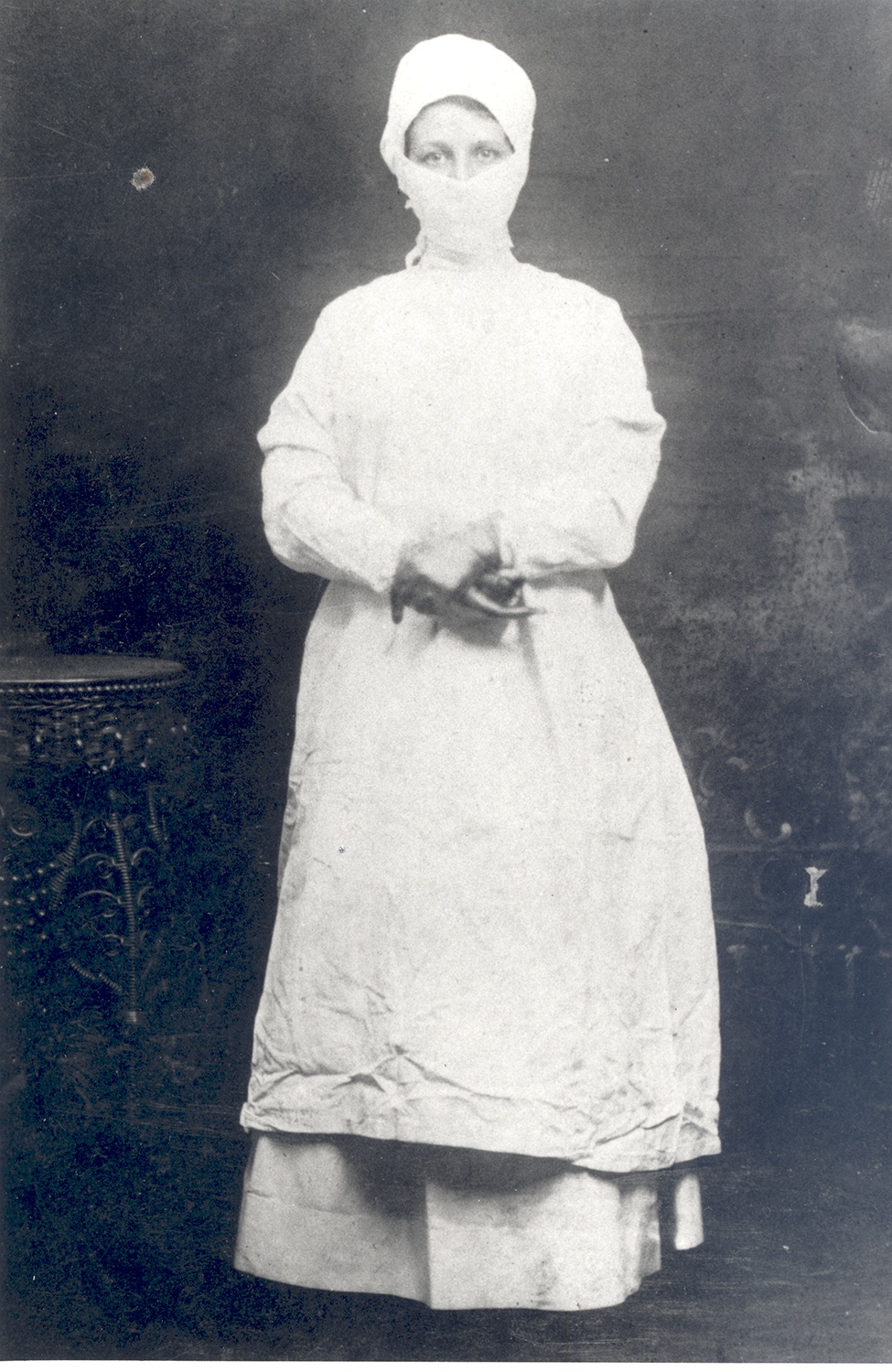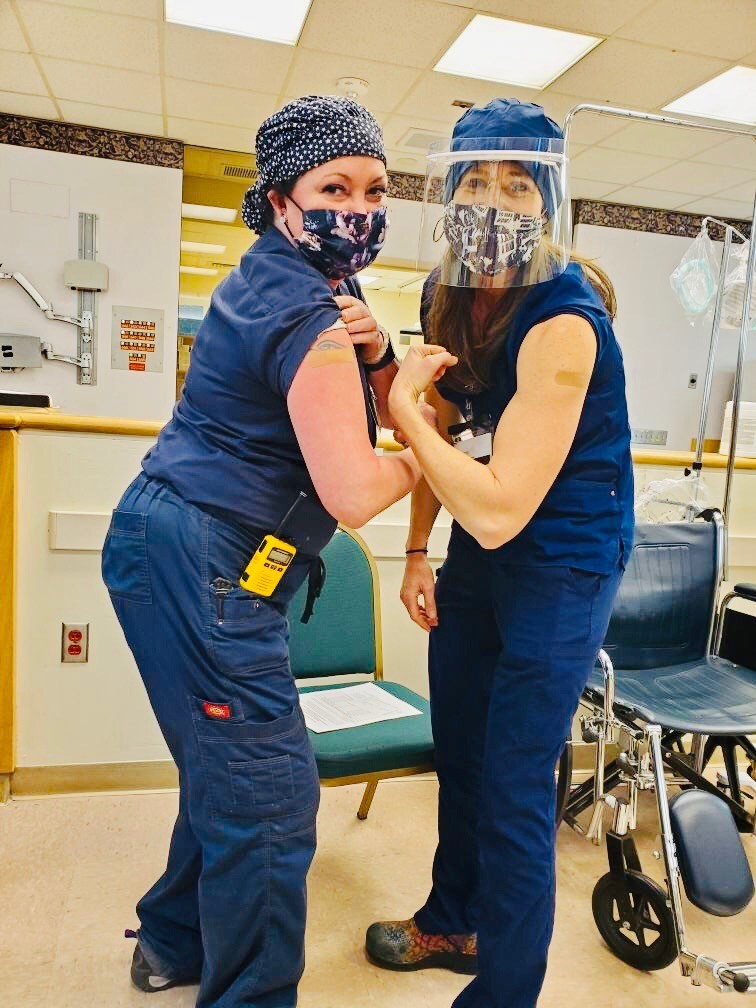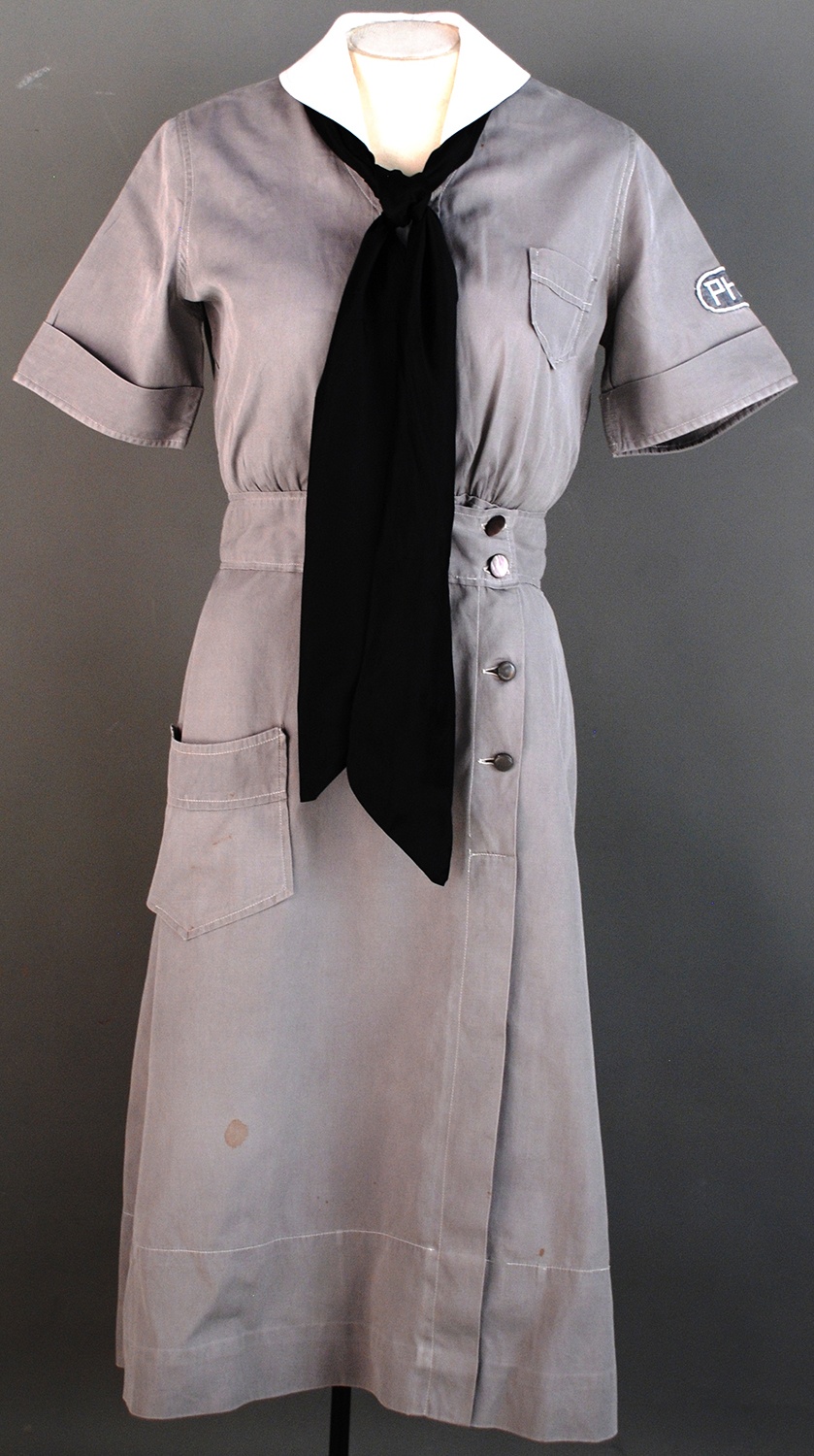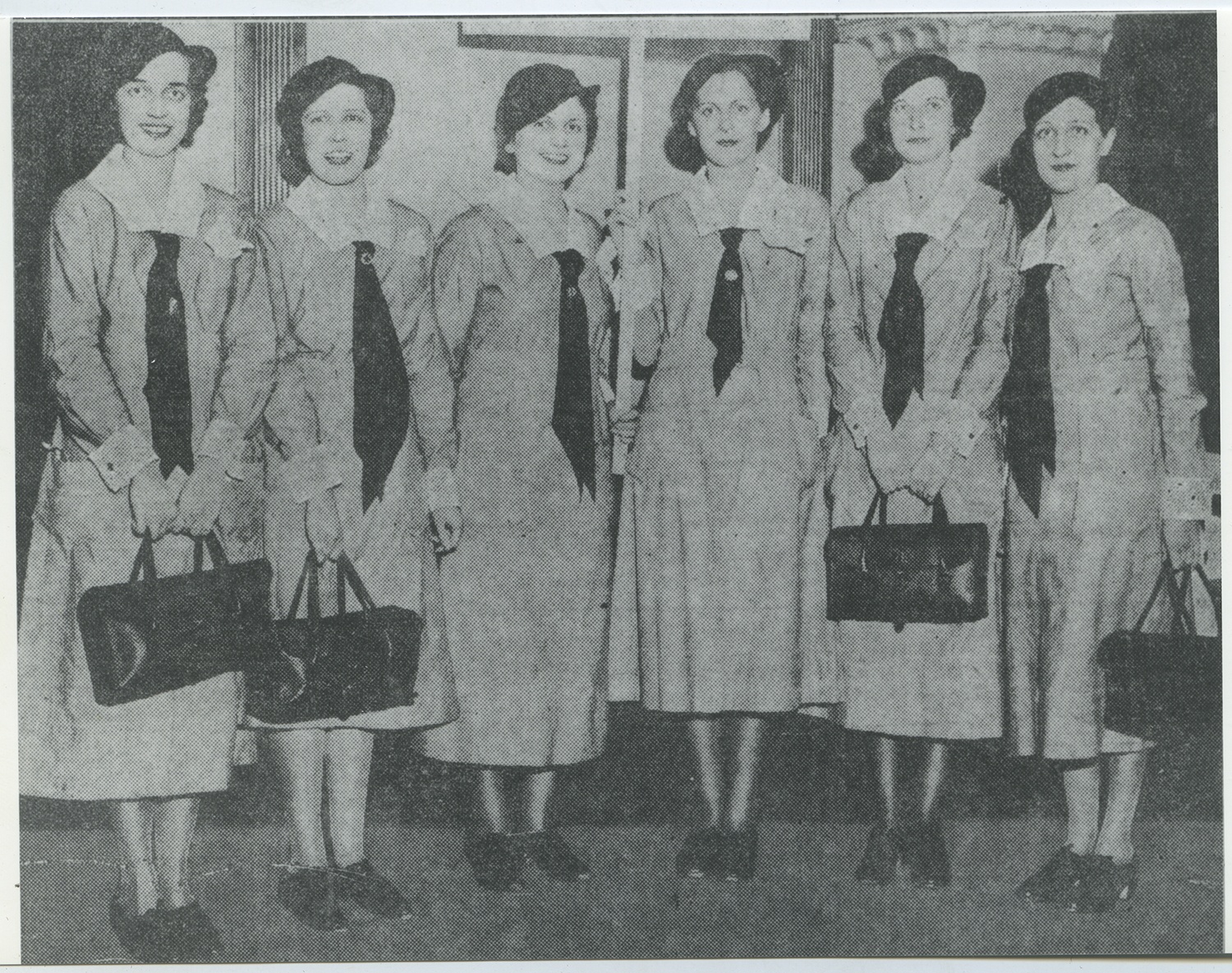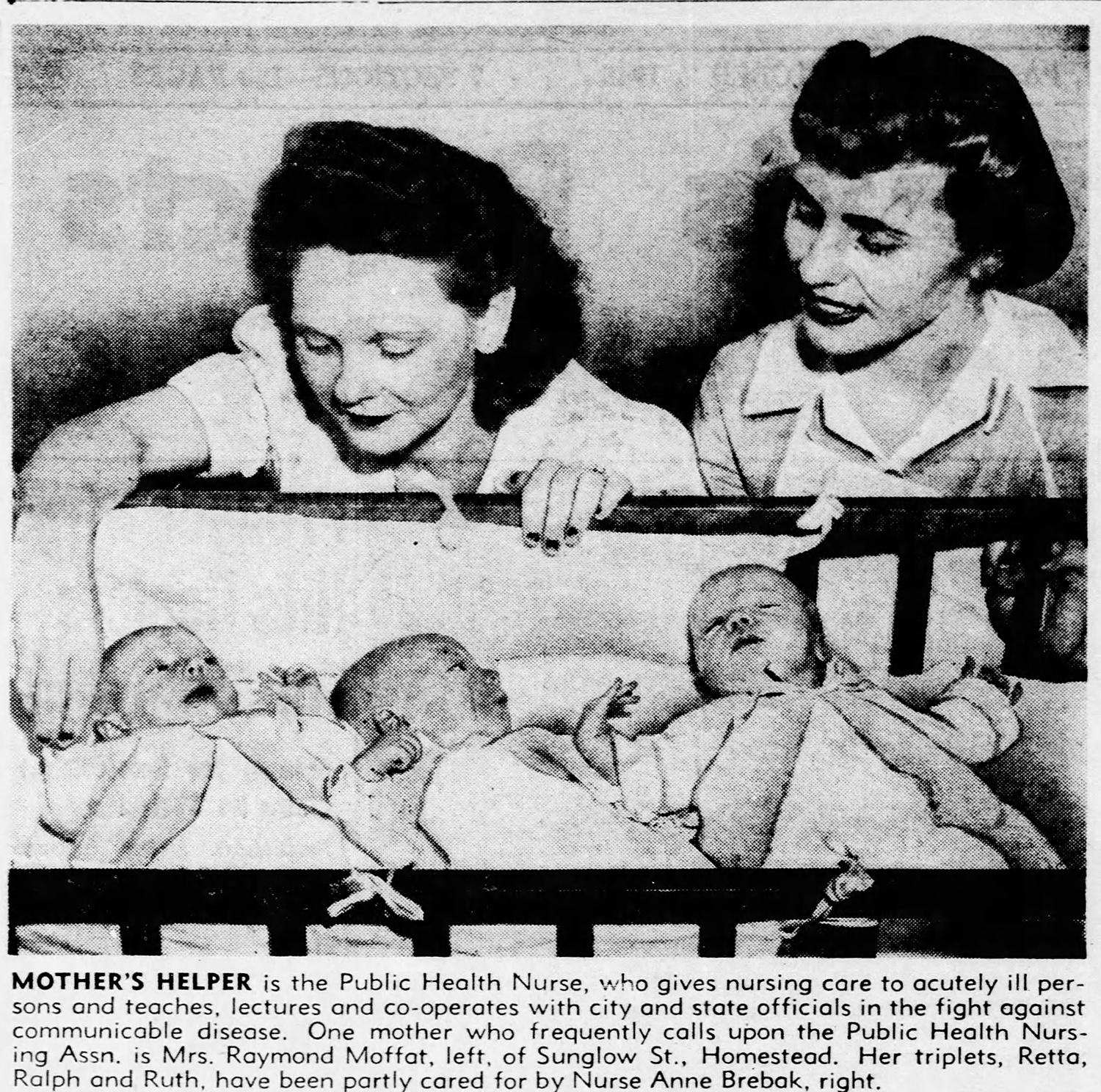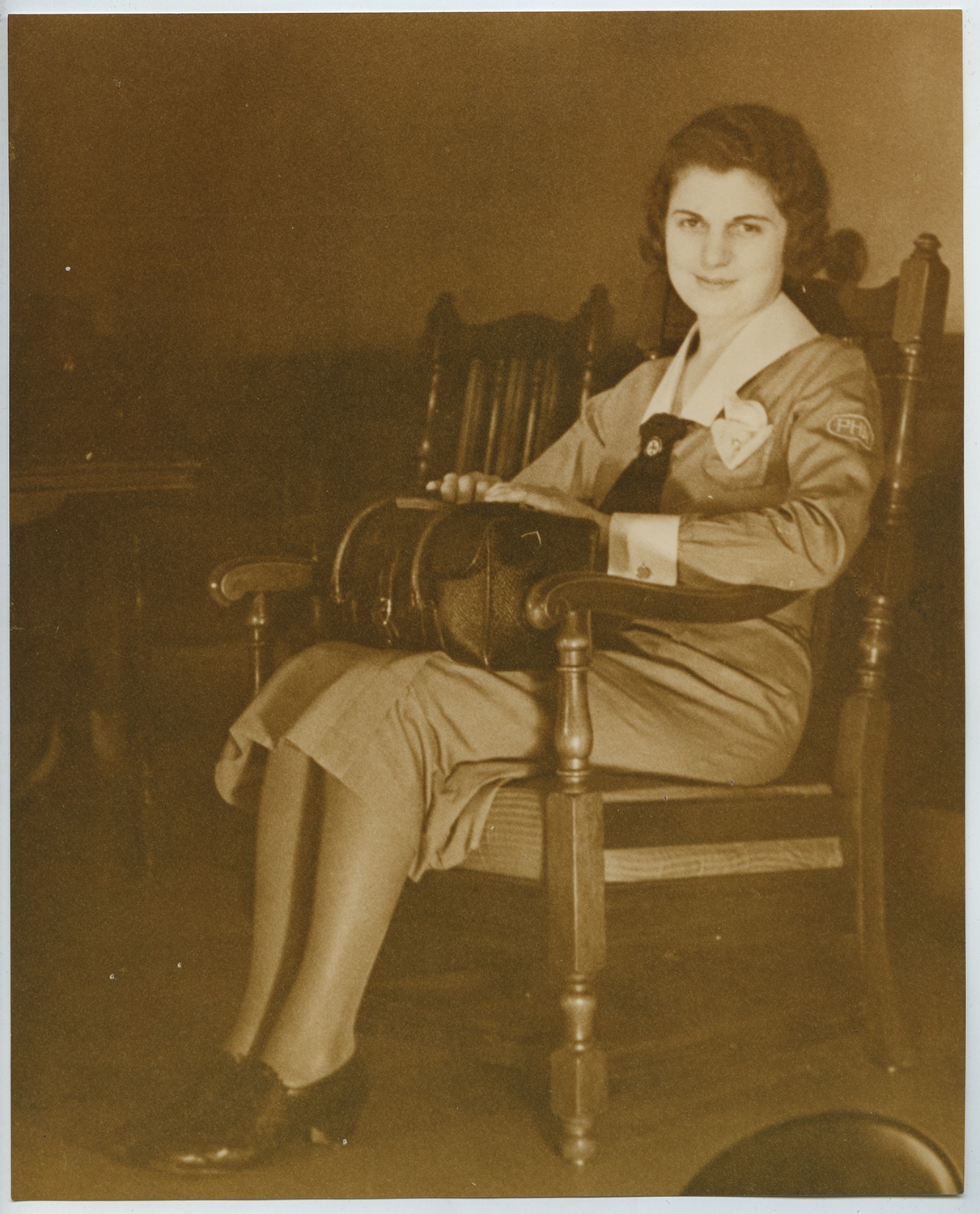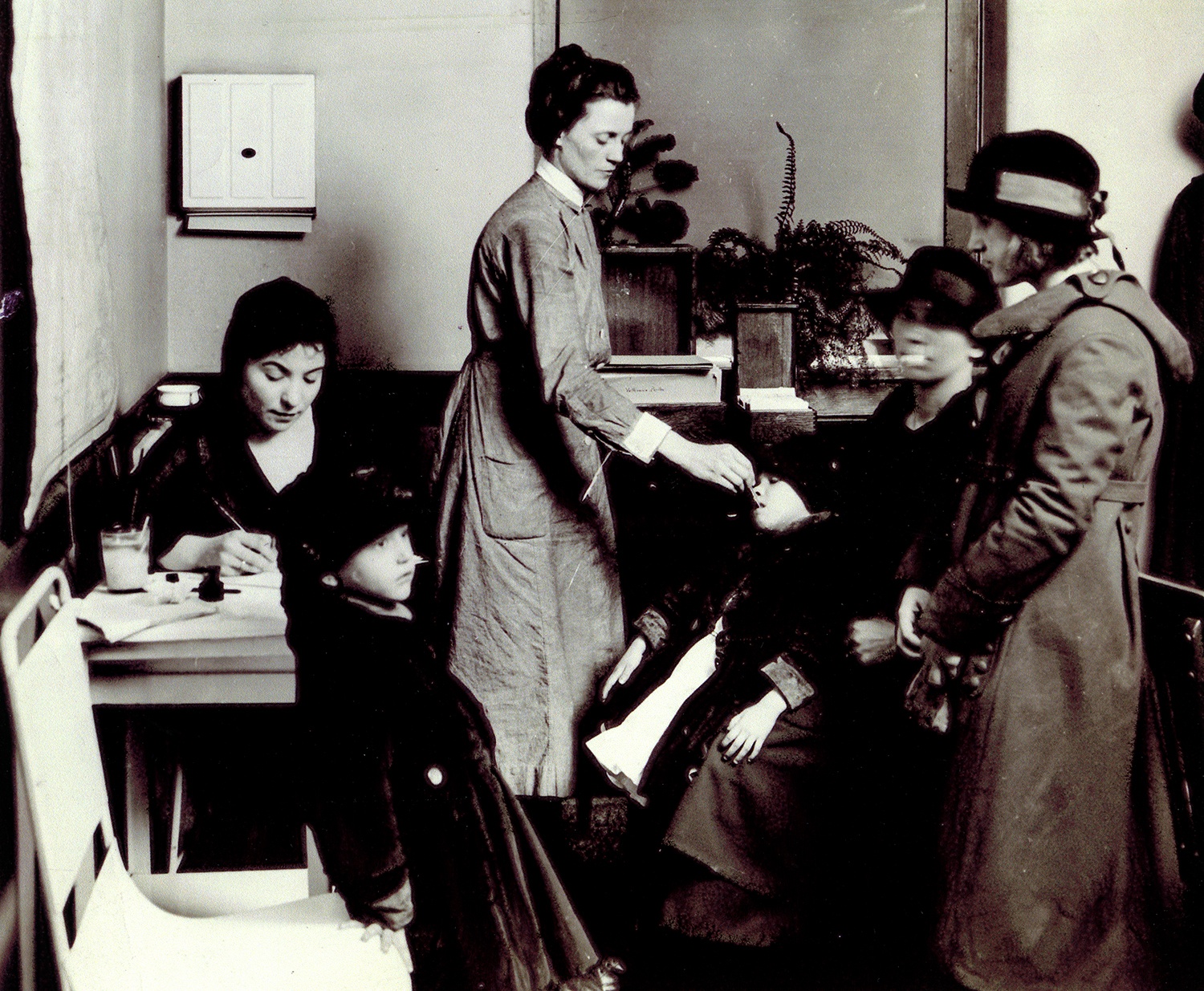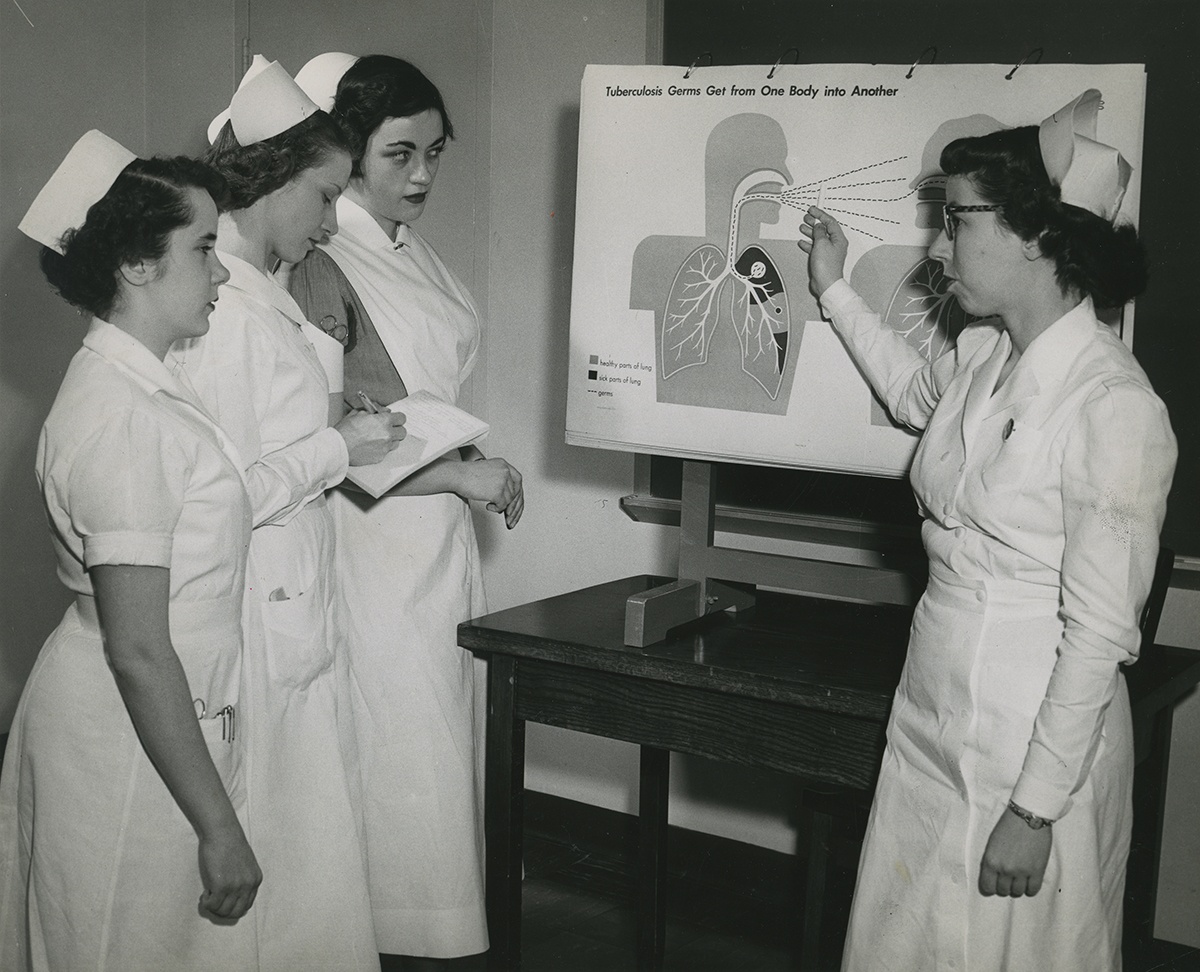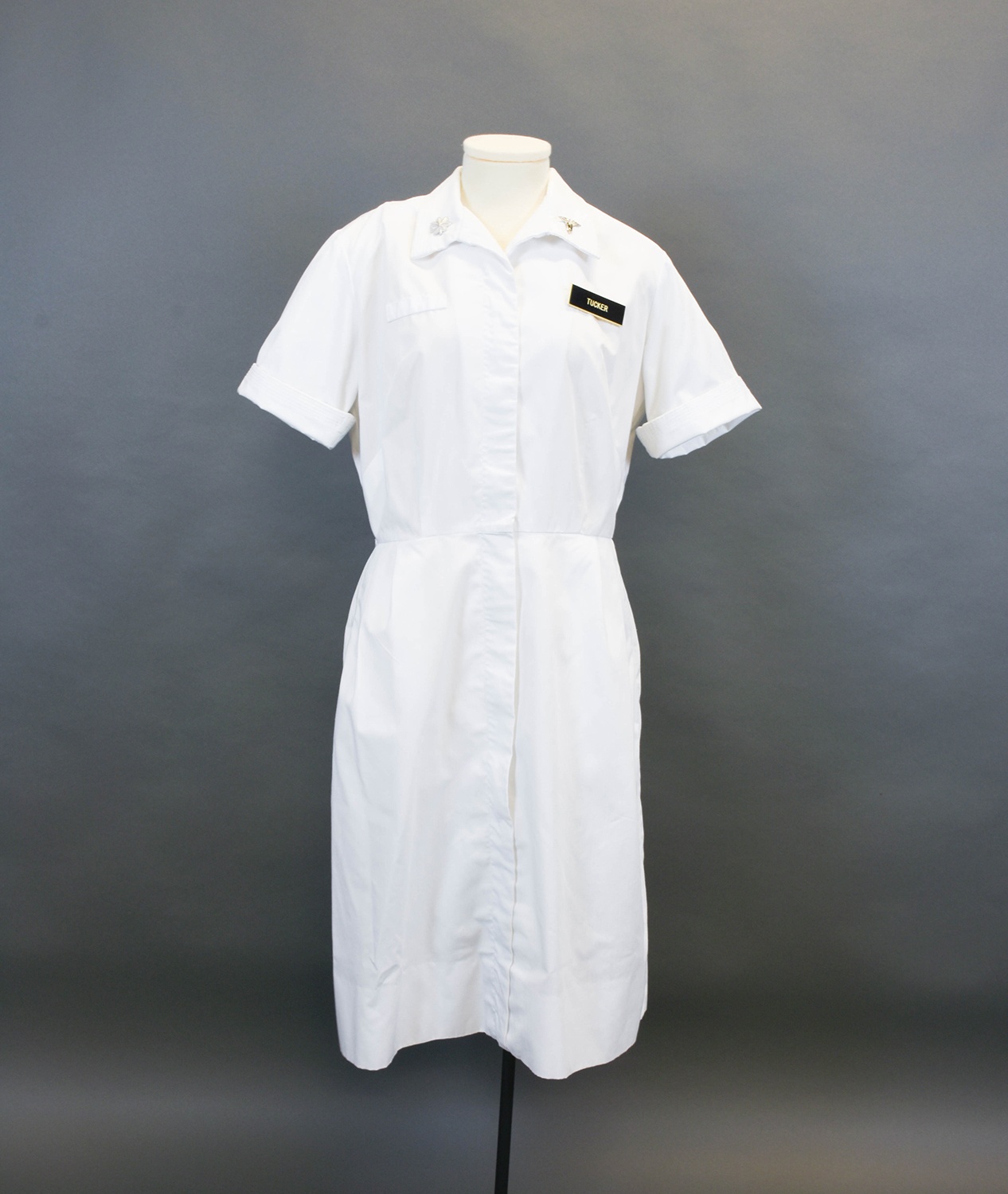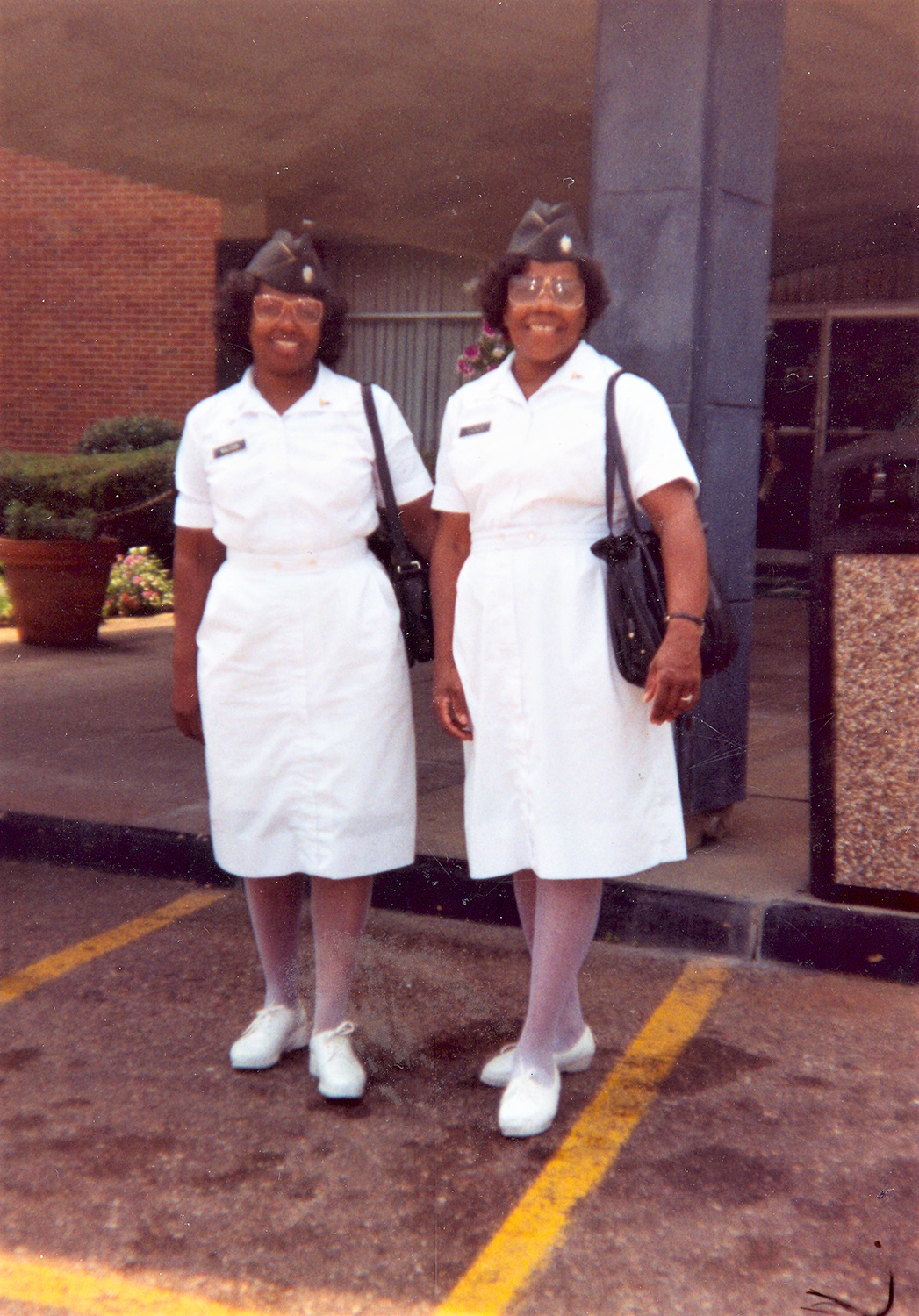A photograph in the collection of the History Center’s Detre Library & Archives captures a moment in the life of an operating room nurse from Montefiore Hospital, c. 1910. Clothed head –to-toe in white, only her eyes are visible. Although we do not know much else about her, the image speaks across decades, evoking coverings worn today by frontline personnel fighting COVID-19. History Center staff are currently working with members of the region’s health care community to ensure that artifacts and images documenting those contributions become part of our permanent collection. A future blog post will feature some of those materials.
In the meantime, in celebration of National Nurses Week, which spans from May 6, 2021 (U.S. National Nurses Day) to May 12, 2021 (International Nurses Day and the birthday of Florence Nightingale), here are a few other History Center collections that remind us of the legacy of care created by nurses in Western Pennsylvania.
Montefiore Hospital Photographs
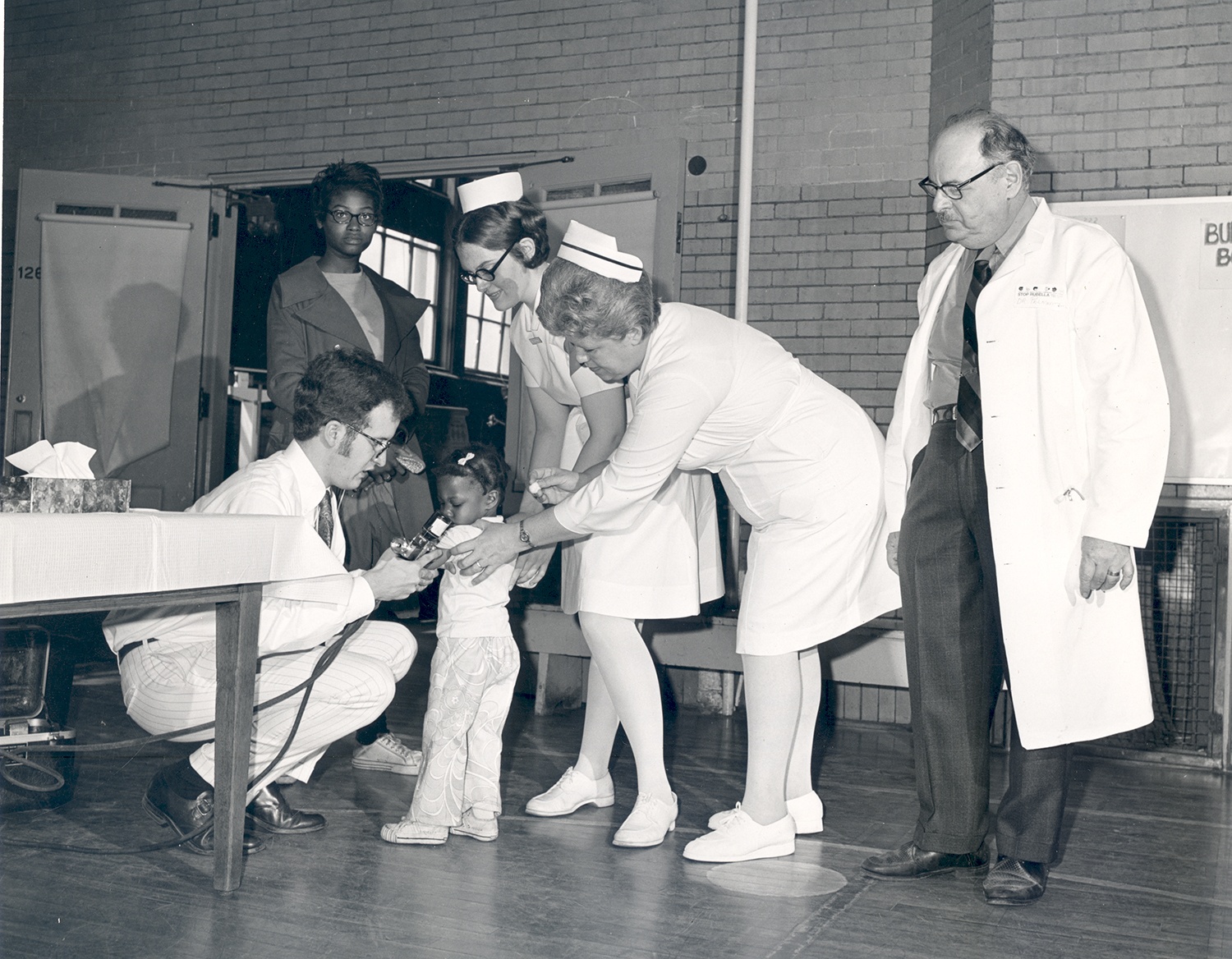
That image of the nurse covered head-to-toe in white is from a collection of photographs documenting the history of Pittsburgh’s Montefiore Hospital, c. 1890 until 1988, when it was sold to the University of Pittsburgh. (Collection link.) The story of the hospital’s founding by Annie Jacob Davis, “the mother of Montefiore,” has been told previously on this blog.
Many images in the collection testify to the central role that nurses played in supporting public health functions, both within the hospital and out in the community. One photo, for example, shows a Registered nurse and student nurse assistant helping to reassure a young charge at Gladstone School in Hazelwood, receiving a vaccination during Allegheny County’s campaign against rubella (German measles) in 1970. The U.S. had seen a severe outbreak of rubella, which could cause birth defects in children or miscarriages and stillbirths in pregnant women, in 1964-1965. With a vaccine finally developed in 1969, agencies across the nation raced to vaccinate school children against the disease. This included the campaign launched here in Allegheny County.
Anne M. Nixon, Public Health Nurse
The contribution of nurses to the county’s families is also illustrated by a uniform and photographs documenting the career of Pittsburgh Public Health Nurse Anne M. Nixon, active in the 1930s. Nixon and other public health nurses, outfitted in gray uniforms with “PHN” patches on their shoulders, fanned out across neighborhoods such as the South Side, visiting people’s homes. They worked to improve pre-natal care, taught about nutrition and disease control, and assisted new mothers with learning modern infant care. By one count in 1931, Public Health Nurses made more than 160,000 visits during the previous year.[i] Sometimes they paid for that service with their lives. In May 1931, Public Health Nurse Josephine Wilson, caring for multiple members of the Weigand family of Reserve Township (just north of Millvale), sickened and died along with three family members. Preliminary reports feared that the household had been stricken with psittacosis, or parrot fever, a zoonotic illness that can cause pneumonia-like symptoms in humans.[ii]
Breathe Pennsylvania Records
Respiratory care was also the focus of activities documented in the records of Breathe Pennsylvania. Established in Pittsburgh in the early 1900s, Breathe Pennsylvania’s early work focused on fighting the scourge of tuberculosis, which was once a leading cause of death in the city and surrounding mill towns. You can read a fuller account of that fight in another History Center blog post.
Again, much of this fight was waged by nurses. Images here capture a nurse assisting a mother and child at the Hill District’s Tuberculosis Hospital in the early 1900s. Then in a later photograph, c. 1950, student nurses review a diagram showing how tuberculosis was passed from one person to another, combatting earlier notions that the dreaded illness was hereditary. New antibiotic treatments and concerted public effort succeeded to the degree that the Tuberculosis Hospital was closed in 1955. While Breathe Pennsylvania donated a large collection of material to the Detre Library & Archives in 2015-2016, the organization remains active today as an advocate for respiratory health in Western Pennsylvania.
Patricia Tucker, 339th General Hospital Reserve Unit
A different kind of service is reflected in the nurse’s uniform worn by Lieutenant Colonel Patricia Tucker during the Vietnam War era, who served as an operating room nurse in the U.S. Army Reserve 339th General Hospital from 1974-1997. The 339th was a reserve unit first deployed in Pittsburgh during World War I that worked out of multiple area hospitals to train personnel and keep them ready to take over and man a 1,000-bed unit caring for wounded soldiers once they were transported from front line evacuation zone and field hospitals. Seven area hospitals participated as part of the 339th during the Vietnam War era, including St. Margaret Hospital, Allegheny General, West Penn, Mercy, the Leech Farm and Oakland VA Hospitals, and St. Francis Hospital in Lawrenceville, where Tucker was stationed until her retirement in 1997. The 339th General Hospital’s long history came to an end in 2011 when it was deactivated and ceased to exist as a military unit.
Tucker’s uniform represents generations of Western Pennsylvania residents who served as nurses during wartime.
For another story on World War II nurse Mary T. Sullivan, check out this “History at Home” video for National Nurses Day 2020.
These are just a few of the thousands of stories representing the work of nurses in Pittsburgh hospitals, VA Health facilities, and public health services. If you have other artifacts, archives, and stories, please consider sharing them with us.
For further reading
To learn more about Breathe Pennsylvania, check out their website.
For a timeline history on the origins of National Nurses Week, check out this link.
Anne Madarasz, “With Mercy and Compassion – National Nurse’s Day,”Heinz History Center blog, May 6, 2020. Available online.
Diane Wendt, “Combating infectious disease and slaying the rubella dragon, 1969-1972,” “Oh Say Can You See,” National Museum of American History, Oct 19, 2015. Available online.
“Reservists Learn to Run Hospital, Prepare Haven for War Wounded,” The Pittsburgh Press, Feb. 13, 1966, p. 41.
[i] “Nurses Stress Education of Mothers in Child Care,” The Pittsburgh Press, March 25, 1931, p. 9.
[ii] “Parrot Fever Feared in Pittsburgh Deaths,” The News-Herald (Franklin, Pa.), May 27, 1931, p.1.
Leslie Przybylek is senior curator at the Heinz History Center.
